Description and Identification
Four species of tortoise are native to North America; Berlandier's Tortoise is the smallest of the four. The average size of this species is approximately 8 to 10 inches as adults. The carapace is rounded and ranges in coloration from dark brown with beige highlights appearing on the center of the pleural and vertebral scutes and on the edges of the marginal scutes. In dorsal perspective it is almost as wide as it is long. The plastron is colored similarly to the carapace with dark brown to black present on the edge of the plastral scutes distal to the midline. The head, neck and limbs can range in coloration from tan to dark brown with some specimens exhibiting black scales on the front of the limbs and bottom of the feet. A pair of mental glands can be seen on the lower jaws of adult specimens. Younger animals are lighter in color and patterns are more pronounced and tend to darken with age.
-
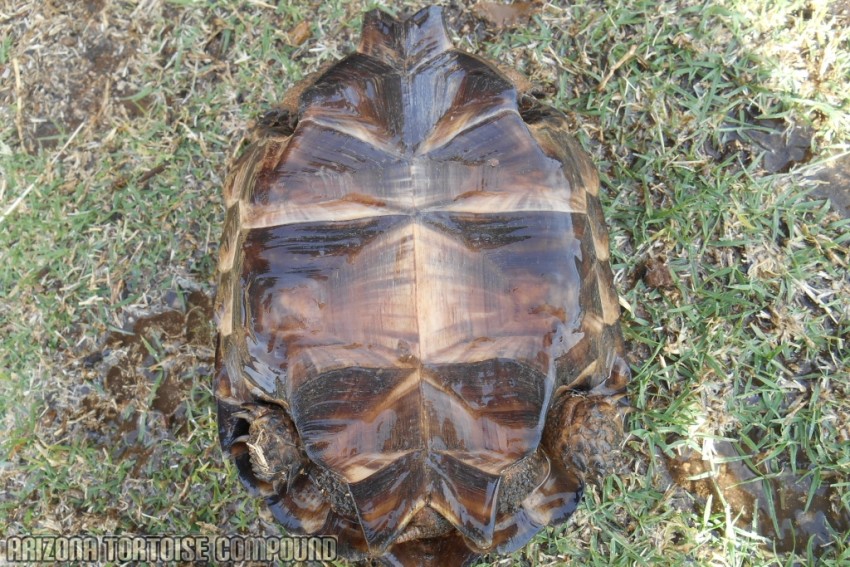
-
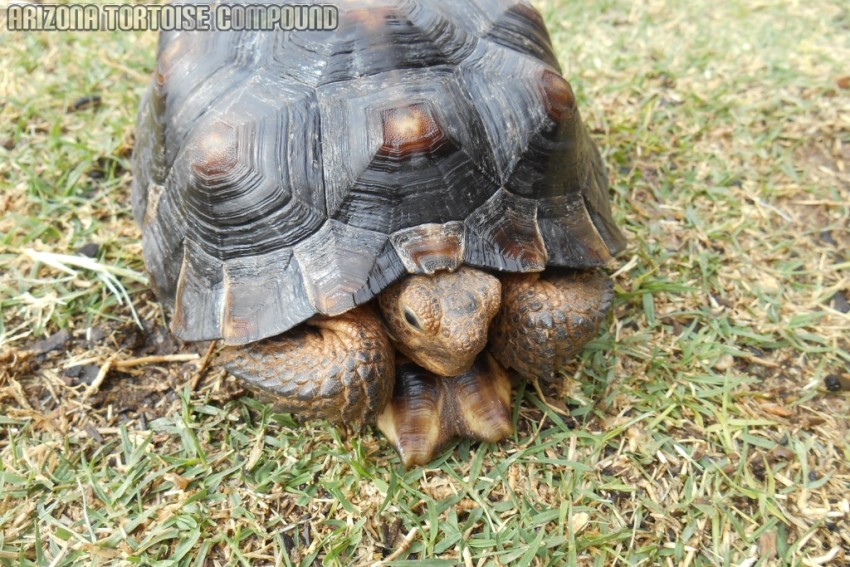
-
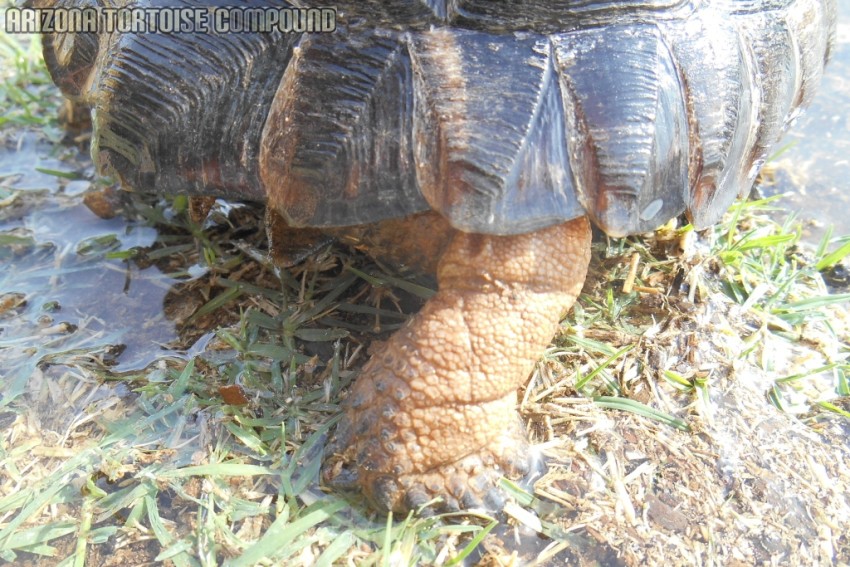
-
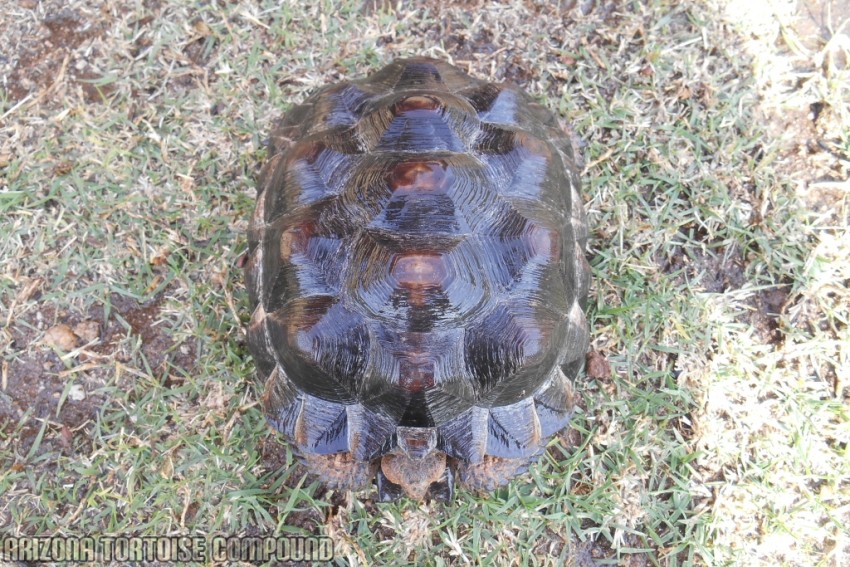
-

-
 Left - Gopherus morafkai (Sonoran Desert Tortoise); Center - Gopherus agassizii (Mojave Desert Tortoise); Right - Gopherus berlandieri (Texas Tortoise)Left - Gopherus morafkai (Sonoran Desert Tortoise); Center - Gopherus agassizii (Mojave Desert Tortoise); Right - Gopherus berlandieri (Texas Tortoise)
Left - Gopherus morafkai (Sonoran Desert Tortoise); Center - Gopherus agassizii (Mojave Desert Tortoise); Right - Gopherus berlandieri (Texas Tortoise)Left - Gopherus morafkai (Sonoran Desert Tortoise); Center - Gopherus agassizii (Mojave Desert Tortoise); Right - Gopherus berlandieri (Texas Tortoise) -
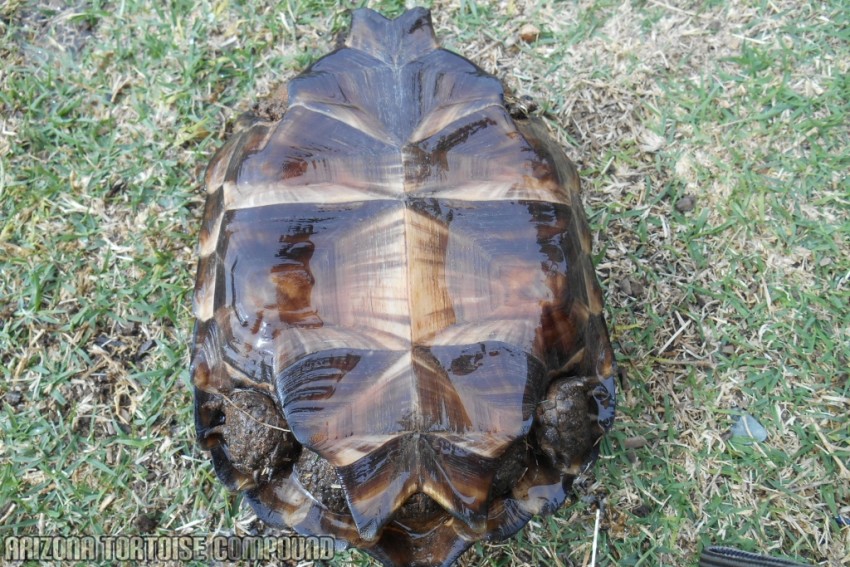
-
 Right - Gopherus morafkai (Sonoran Desert Tortoise); Center - Gopherus agassizii (Mojave Desert Tortoise); Left - Gopherus berlandieri (Texas Tortoise)Right - Gopherus morafkai (Sonoran Desert Tortoise); Center - Gopherus agassizii (Mojave Desert Tortoise); Left - Gopherus berlandieri (Texas Tortoise)
Right - Gopherus morafkai (Sonoran Desert Tortoise); Center - Gopherus agassizii (Mojave Desert Tortoise); Left - Gopherus berlandieri (Texas Tortoise)Right - Gopherus morafkai (Sonoran Desert Tortoise); Center - Gopherus agassizii (Mojave Desert Tortoise); Left - Gopherus berlandieri (Texas Tortoise) -
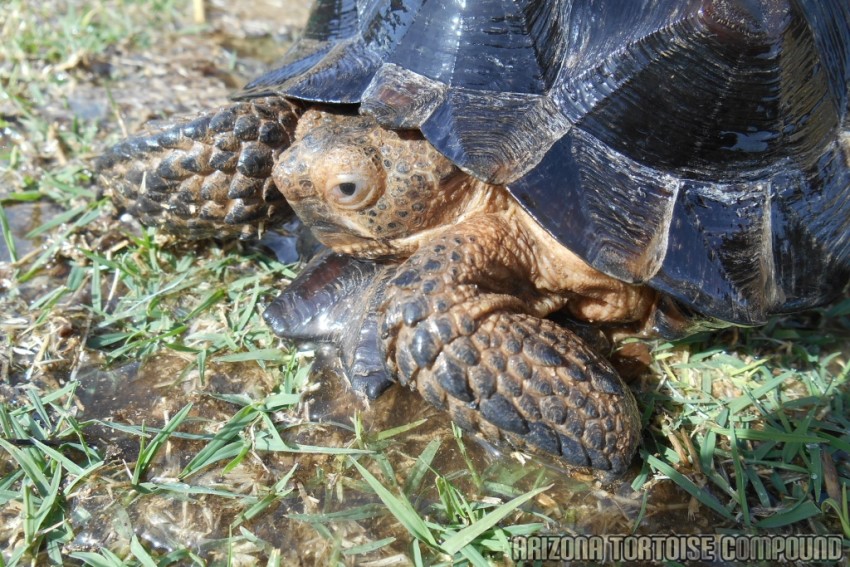
-
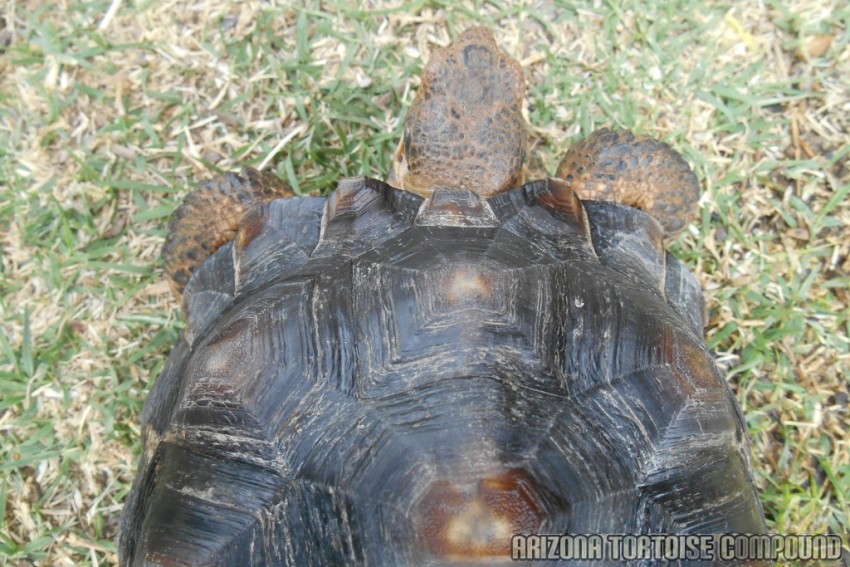
-

-
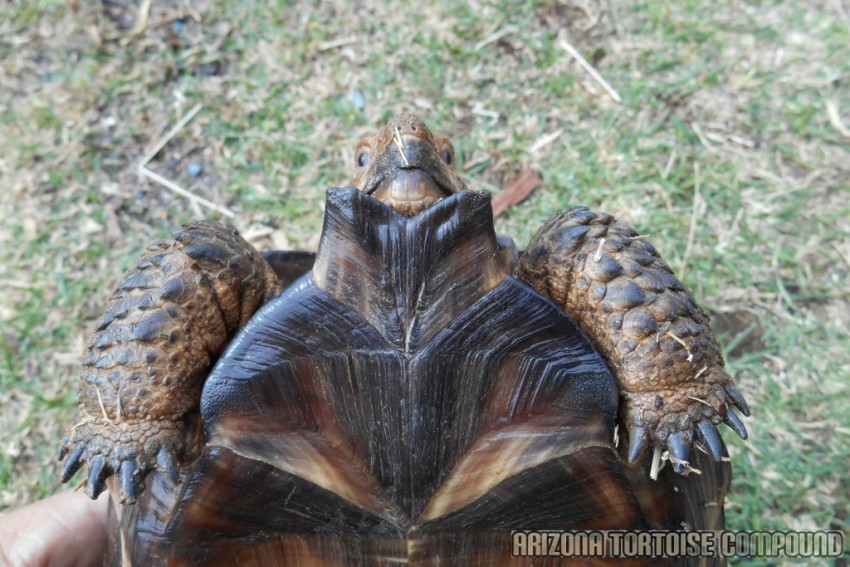
-
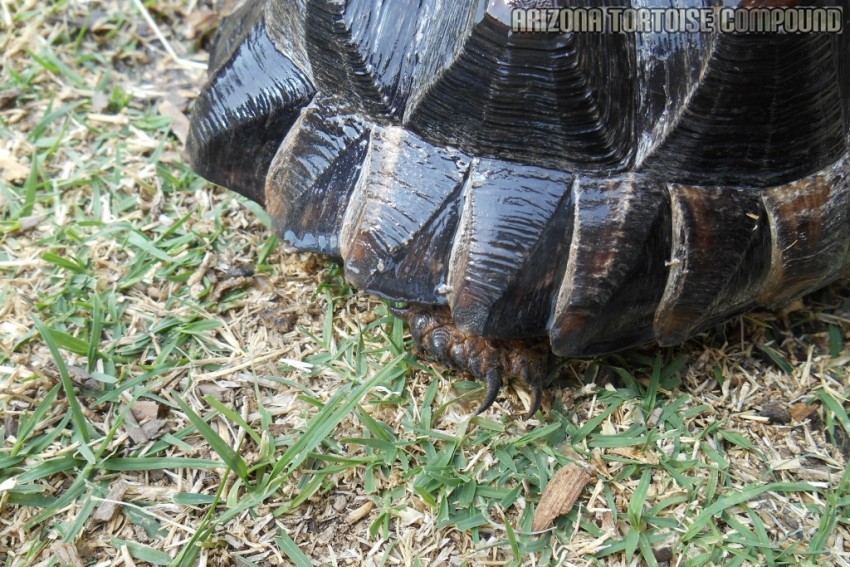
-
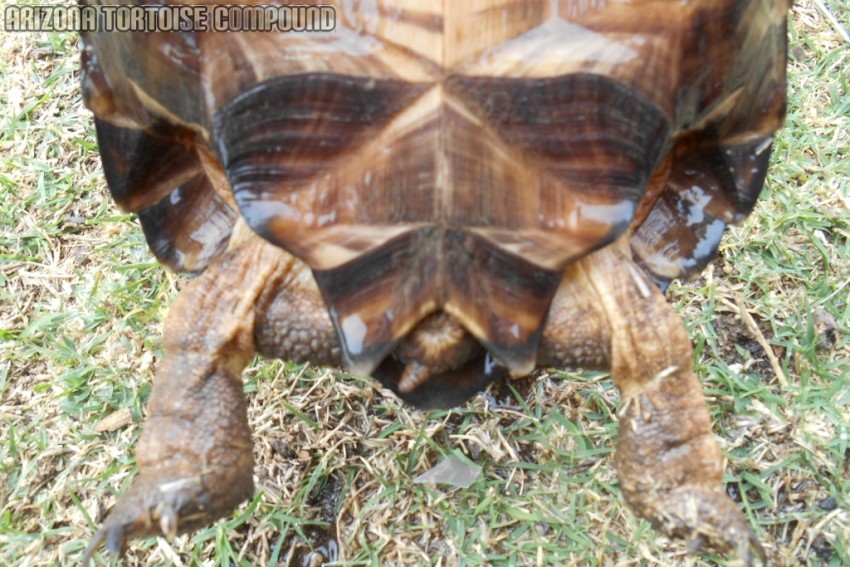
Distribution
Within the United States, the Texas Tortoise has a geographic distribution confined to southern Texas. This range includes the area south of Del Rio and San Antonio. In Mexico, this species is distributed across eastern Coahuila, Nuevo Leon, Tamaulipas, and northeastern San Luis Potosi
Native Habitat
Berlandier's Tortoise are typically found in grasslands and very dry savanna-like territories. They have an extreme tolerance to heat and dry conditions. They do seek shelter in thick bushes and small patches of brush. This species shows a preference for well-drained, sandy soils and open scrub woods. These tortoises are capable of digging burrows, but prefer to use a pre-dug mammal burrow or prepare a pallet in which to reside.
Wild Diet
Their natural diet consists mostly of grasses, weeds, cactus pads, and cactus fruit. Some of the native plants found in the range of Gopherus berlandieri include: Muhlenbergia capillaris, Salvia greggii, Chasmanthium latifolium, Heterotheca subaxillaris, Brazoria truncata, and Leucophyllum frutescens. Berlandier's Tortoises are mainly herbivorous, but have been seen eating small snails and insects. Fecal matter and animal bones may also be consumed.
Behavior
Weather permitting, Gopherus berlandieri can be found active almost every month throughout the year. They are most active in the early morning hours and at dusk. During these times, they are found grazing or searching for food. When two males meet in a territory, they will often battle, sometimes leading to the death of one of the tortoises. Males will also try to turn each other over. If an overturned loser can not right himself, he can quickly overhead in the desert and die from hyperthermia. Berlandier's Tortoises are capable of hibernating, but due to the regional temperatures, they go into a state of brumation, rather than hibernation.
Reproduction
Courtship and mating season of Berlandier's Tortoise extends from June until September. During courtship, the male follows the female, bobbing his head in her direction. Eventually catching up with the female, the male attempts to stop her by biting her head, forefeet, and the back of her shell; he will also ram her with his gular projection, a sturdy extension on the front of the plastron, just below the chin. The female will often pivot around to avoid this, but eventually stops and withdraws her head as the male continues to push her around. Finally, he will mount her from behind, with his forefeet resting on her shell, and mating takes place.
Nesting occurs between April and July with the female laying a small clutch of eggs; a clutch usually consists of two or three eggs laid in a depression in the ground. One or two clutches are laid each year, and the eggs hatch after 88 to 118 days of incubation. The Texas Tortoise is slow to mature and it is through that females may not breed successfully until they are more than a decade old.
This Care Guide is an external Care Guide. While it is possible this care guide may not be for the exact species you were looking for, it provides information suitable for your species. This Care Guide link will take you away from theTurtleRoom. We only link to care guides we trust. Thanks for visiting theTurtleRoom.org.
Care GuideIf you would like to contribute to the photo gallery of any turtle or tortoise species, please email us at [email protected]. You will be credited for any photos you contribute.
| Gopherus berlandieri |
| (Agassiz, 1857) |
| IUCN Red List: |
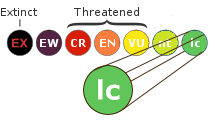 |
| Least Concern (1996) |
| Order: | Testudines |
| Suborder: | Cryptodira |
| Superfamily: | Testudinoidea |
| Family: | Testudinidae |
| Genus: | Gopherus |
| species: | berlandieri |
| Other Common Names: |
| Berlandier's Tortoise |
| CITES: | Appendix II |
| U.S. Legal Status: |
| ESA listed, Take illegal in entire native range (Texas). Possession is legal with permits only. |
Author:
Editors: Stephen J. Enders, Anthony Pierlioni, Chris Leone, Andrew S. Weber, Ben Forrest, and Andrew Hermes
Sources
Disclaimer: The Species Profiles - Natural History, Care Guide, and Photo Gallery database is an educational resource. It does not cover all Chelonian species in the world, nor does it include all the latest scientific information about the species covered. Though we edit our accounts for accuracy, we cannot guarantee all information in those accounts. While theTurtleRoom's staff and contributors provide references to books and websites that we believe are reputable, we cannot necessarily endorse the contents of references beyond our control.

This work by theTurtleRoom is licensed under a Creative Commons Attribution-NonCommercial-ShareAlike 4.0 International License.


































